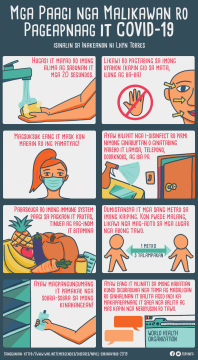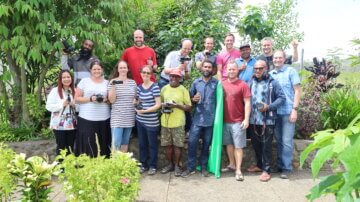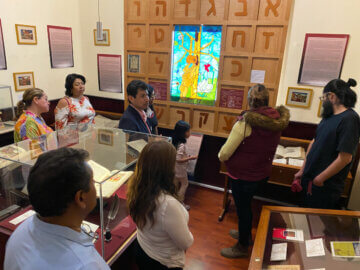Lending a Hand for Health in the Philippines
Bible translators help translate COVID-19 Infographic.
Many language communities in the Philippines have not had access to crucial COVID-19 information in the languages they best understand. In order to serve these language communities during the coronavirus pandemic, a group of students and advocates affiliated with the linguistics department of the University of the Philippines (UP) started a grassroots initiative that sought volunteers to help translate coronavirus health information into Philippine languages. Translators from three Bible translation organisations in the Philippines responded with assistance.

Ibaloy (translated by Wycliffe Philippines staff)
Joining a countrywide effort
It was a post on social media asking for volunteers to help translate a World Health Organisation COVID-19 infographic that caught the eye of Manny Tamayao, library and archives manager of SIL Philippines, and a member of SIL’s leadership team. Manny, who has a passion for languages, shared the need with translators in SIL Philippines, as well as with Wycliffe Global Alliance organisations Translators Association of the Philippines (TAP) and Wycliffe Philippines. Bible translators from the three translation organisations joined a countrywide group of community volunteers who translated the text of the WHO COVID-19 infographic into a total of 55 languages. (SIL, TAP and Wycliffe Philippines staff translated 11 of those.)
“I am happy that some … organisations recognized the need of translating these sources into other languages, not just the main lingua franca, or English only, or Filipino only,“ Manny said. “We [in SIL, TAP and Wycliffe Philippines] were happy to partner with [the University of the Philippines] in this initiative, and we’re also happy to see volunteers work all throughout the country.”
Having an impact

Inakeanon (translated by TAP staff)
Project participants encountered their share of “bumps in the road”. Orthography differences surfaced in one language and had to be resolved. Distribution on social media was a challenge for one language in the mountainous south because of limited internet connectivity, so print versions were distributed instead. However, the materials are reaching the intended audiences: Manny noted that an online posting in one language in the Central Philippines has been shared and re-shared many times.
SIL and TAP staff members have found another way to contribute their expertise. They are developing some basic guidelines for how to produce a translation that is not only accurate, but also flows naturally in the target language. The goal is to help novice translators to be better equipped to produce a translated text that communicates the original meaning clearly, yet in a form that sounds natural to native speakers -- which can sometimes be a delicate balance.

Mandaya (translated by SIL Philippines staff)
The volunteer-based initiative has allowed for the sharing of crucial COVID-19 health information in a number of local languages throughout the country. And God used Manny’s connections with linguistic colleagues and friends at UP to open the door for members of the Bible translation movement to help make these life-saving materials accessible to the communities they serve.
To access the COVID-19 infographics in Philippine languages, click here.
Story by Gwendolyn Davies
The latest
View all articles
Informing, teaching, inspiring: PNG workshop teaches video storytelling for language communities
PNG workshop teaches video storytelling for language communities
Read more
Looking ahead at 2024
As the year unfolds, we marvel at the work of God in our rapidly changing world. And, we look forward to a number of gatherings and conversations intended to draw us together.
Read more
Telling the Bible's Story
It may come as a surprise that a museum is among the Wycliffe Global Alliance organisations.
Read more